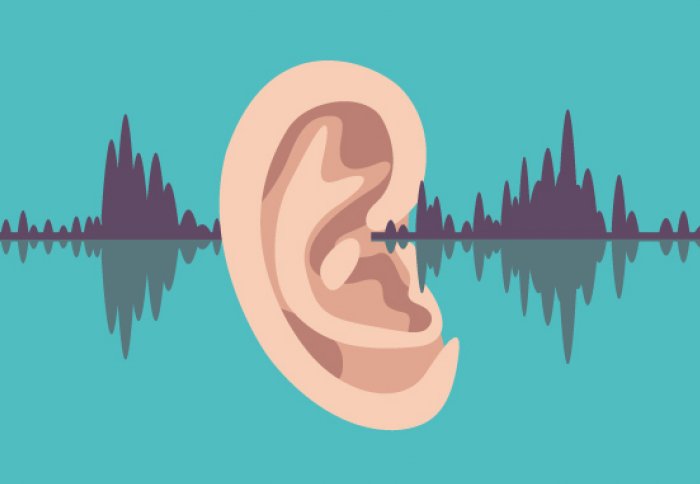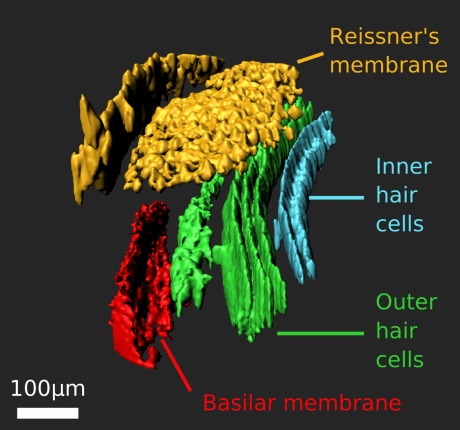

The inner ear processes low-frequency sounds, important for speech and music perception, differently to high-frequency sounds, new research has found
Low frequency sounds, below four kilohertz, are used by human ears for perceiving speech. However, the exact mechanism for how the inner ear processes these important sounds is poorly understood, as the organ is difficult to access in experiments.
It is surprising that we know so little about this important part of hearing, but encouraging that experiments are now pointing the way towards a robust theory of low-frequency sound perception.
– Dr Tobias Reichenbach
Knowing how the ear processes the sounds could help scientists to understand what happens when the process doesn’t work, causing hearing loss. It could also allow engineers to borrow from nature, using the mechanism to design new audio equipment.
The new research, by an international team including researchers from Imperial College London as well as institutions in Sweden and the US, has shown one vital difference in the way high- and low-frequency sounds are processed by the ear.
When a sound wave reaches a part of the inner ear called the basilar membrane, it causes it to vibrate. This in turn activates hair cells on the membrane which amplify the sound, allowing us to hear faint sounds. The hair cells also convert the movement into an electrical signal that can be interpreted by the brain.
The new study, published today in Proceedings of the National Academy of Sciences, shows that the region of the basilar membrane that vibrates in response to low-frequency sounds does not react in the same way as the region that responds to high-frequency sounds.
The team found that low-frequency sounds move the basilar membrane and the hair cells, but the activity of hair cells causes little additional membrane motion. In contrast, high-frequency sounds, which are used for example to pick out speech in a crowded room, are known to cause the hair cells to feed back to the basilar membrane, creating extra vibration there.

Inner ear apparatus. Credit: Rebecca L. Warren
Dr Tobias Reichenbach, from the Department of Bioengineering at Imperial, devised the original theory that suggested low-frequency sounds would be processed in this way, and helped design the latest experiment.
“It is surprising that we know so little about this important part of hearing, but encouraging that experiments are now pointing the way towards a robust theory of low-frequency sound perception,” he said.
The region of the basilar membrane that responds to low-frequency sounds has been difficult to study as it required damaging some of the surrounding bone. In this study, the team used a new imaging technique called optical coherence tomography, which uses light waves to build up a 3D image of the vibration, to probe the area without damage. They studied the movement in the inner ear in guinea pig ears.
Dr Reichenbach said there are still experiments that need to be done to pin down the exact mechanism, such as testing how the low-frequency region of the basilar membrane reacts to different sound intensities, but that the results of the latest study are encouraging.
-
'Minimal basilar membrane motion in low-frequency hearing' by R Warren et al is published in Proceedings of the National Academy of Sciences
Article text (excluding photos or graphics) available under an Attribution-NonCommercial-ShareAlike Creative Commons license.
Photos and graphics subject to third party copyright used with permission or © Imperial College London.
Reporter
Hayley Dunning
Communications Division

Contact details
Tel: +44 (0)20 7594 2412
Email: h.dunning@imperial.ac.uk
Show all stories by this author
Leave a comment
Your comment may be published, displaying your name as you provide it, unless you request otherwise. Your contact details will never be published.



Comments
Comments are loading...